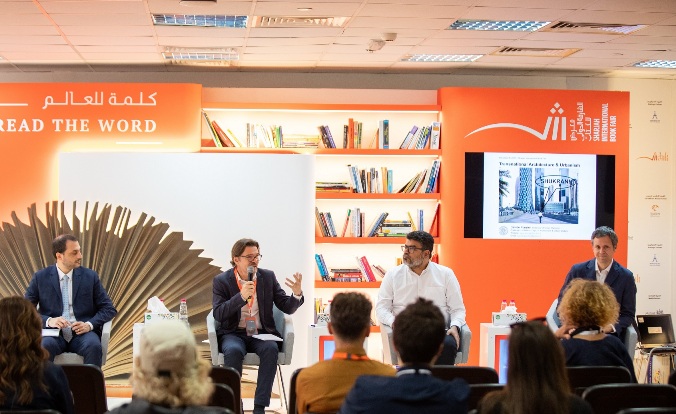Sharjah : The 41 st Sharjah International Book Fair (SIBF) discussed the evolving landscape of high-rise
developments and some of the challenges faced by the industry in creating unique architecture
to create stand-out cityscapes at a panel discussion dedicated to Dr. Davide Ponzini’s book,
Transnational Architecture and Urbanism.
Dr. Davide Ponzini, Professor of Urban Planning at Politecnico di Milano opened the forum by
presenting his acclaimed book which combines urban planning, design, policy, and geography
studies to offer insights into relevant transnational case studies of urban transformation around
the globe as well as covering his 15 plus years of experience in the Middle East as an urban
planner.
Ponzini said: “I look at buildings, the large scale development projects, central business districts
as well as other aspects and connect different cities, arguing that we should shift our attention
from individual buildings to cities as a whole, and how they transform. In the academic debate
there is an explanation about why cities tend to be more like each other and this is normally
boiled down to the simple statement that, it’s globalisation and what does one expect?”
He went on to add that he had problems with this explanation as it traps cities in a box of
homogenisation especially when the same architects and investors are being used to create the
buildings that are meant to stand out globally.
Dr. Paolo Caratelli, Professor of Architecture, Abu Dhabi University, stated that there is often a
misunderstanding when famous architects are tasked to create iconic buildings, thinking that
there is a “blank canvas” to fill.
He said: “There is always a context in which buildings should be added to a city, there is always
something that should represent the “real” city. Too often these large scale projects only allow a
select group of architects to emerge and produce things that are not always contextualised or
integrated into the cities they are built in. Just like in an orchestra, if you have one instrument
that is suddenly much louder it can overwhelm all the others and instead of creating beautiful
music our contemporary cities can become a noise.”
Commenting on the connection made in Ponzini’s book regarding architecture and urban
planning, Dr. Roberto Castillo Melo, Assistant Professor, American University of Sharjah, said:
“One of the most valuable lessons we have learned from this book is the need to remember that
there is a great connection between urban and architectural environments and that our objective
is to enhance and improve the urban setting and not only focus on the aesthetic or surface level
requirements.”
Using the example of the architectural influence of the Roman Empire, he added that urban
planning, globalisation and identity architecture is not a new concept and has been happening
throughout history.
Commenting on how urban planning research should have an impact on practice, Dr. Sami
Ibrahim, Policy & Strategy Advisor for The Executive Council of Dubai, affirmed his belief in the
combination of research and practice when it comes to development.
He said: “It can be difficult at times to convince those in charge of developments the value of
research and the benefits that can be made from giving researchers the time to learn from
previous projects and apply those lessons to future developments. Cities such as Copenhagen,
Barcelona and Vancouver are good examples of urban planning today but they were essentially
laboratories or experimental spaces at one time until they reached this high level of maturity or
what we refer to as ‘best practices’ or ‘benchmarks’.”
